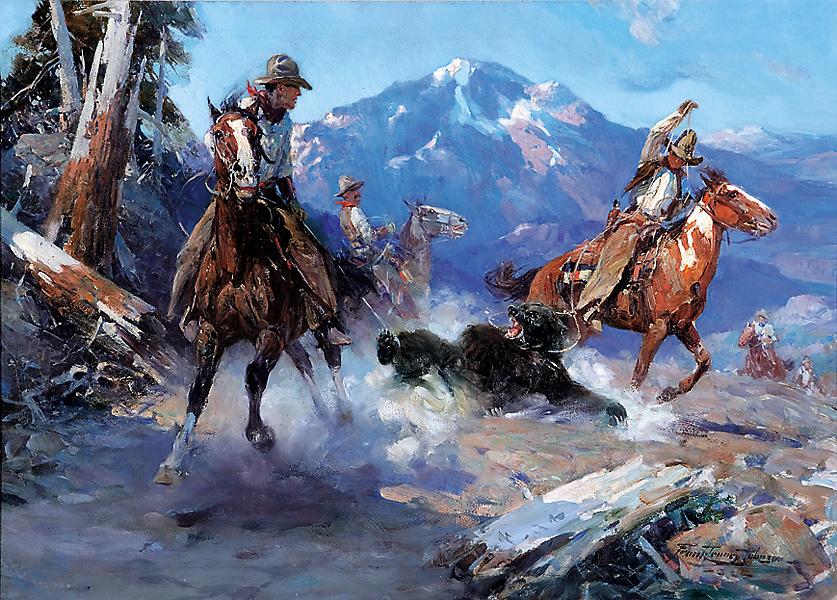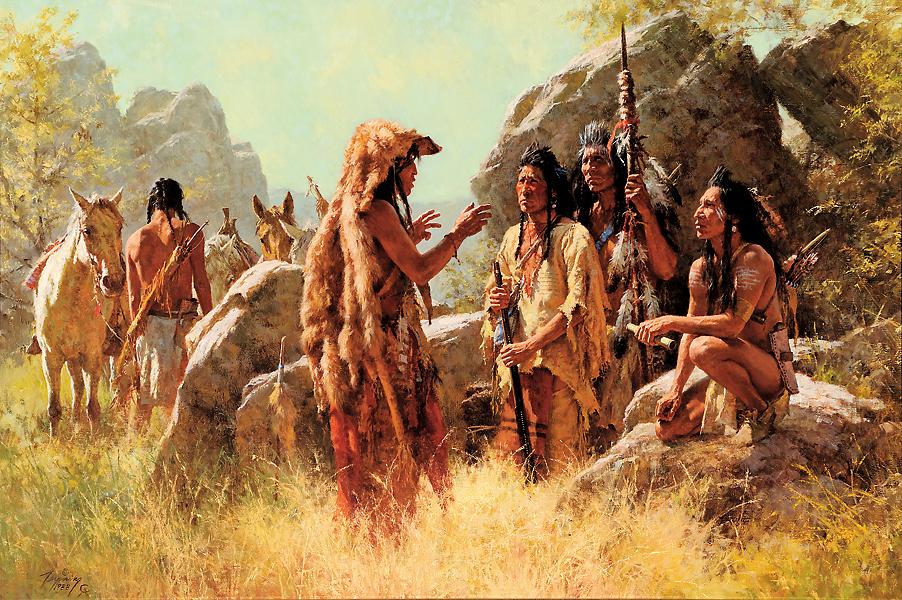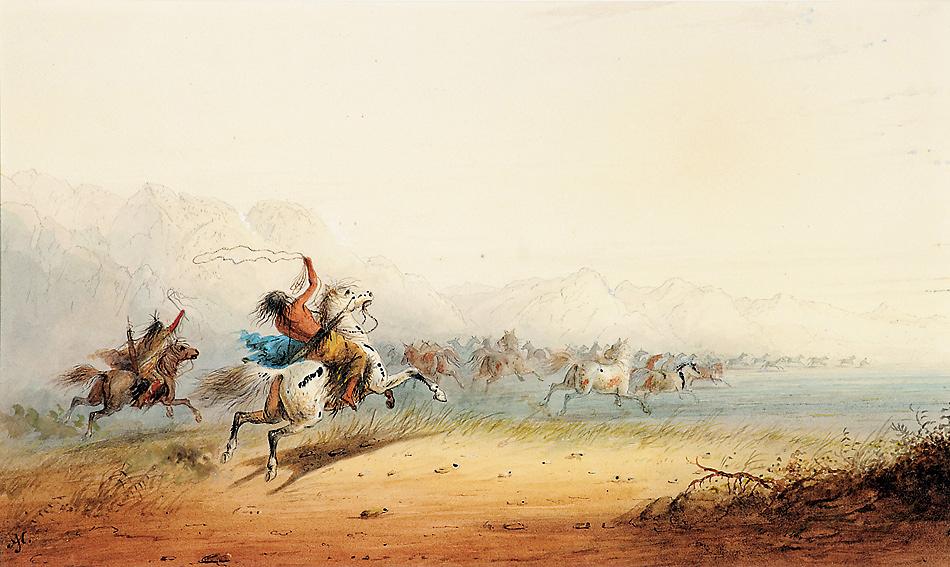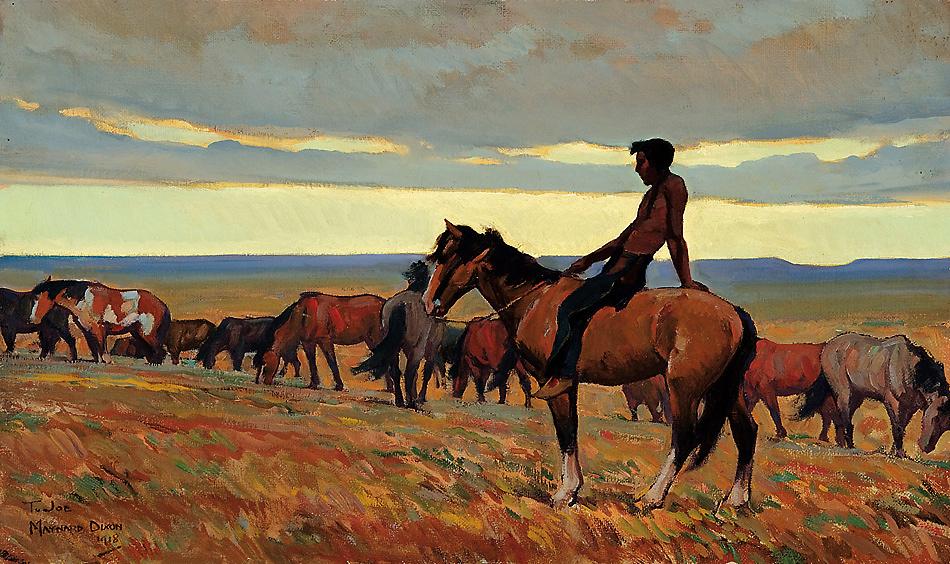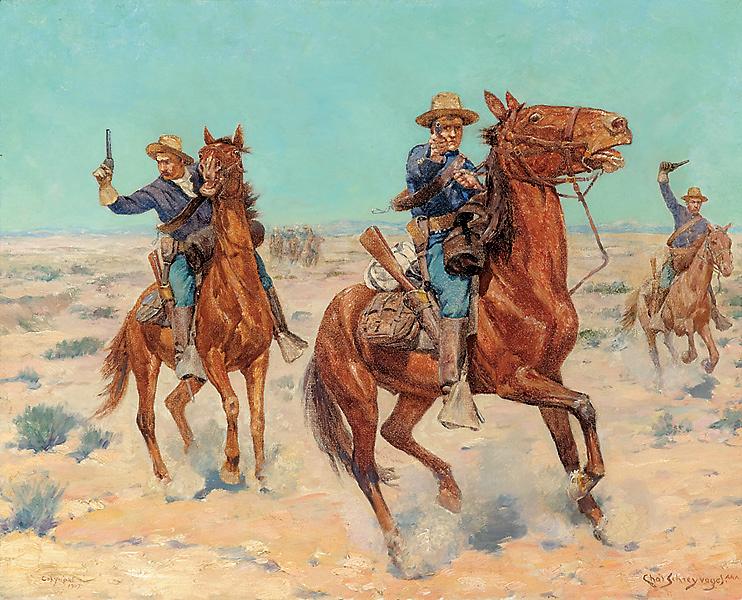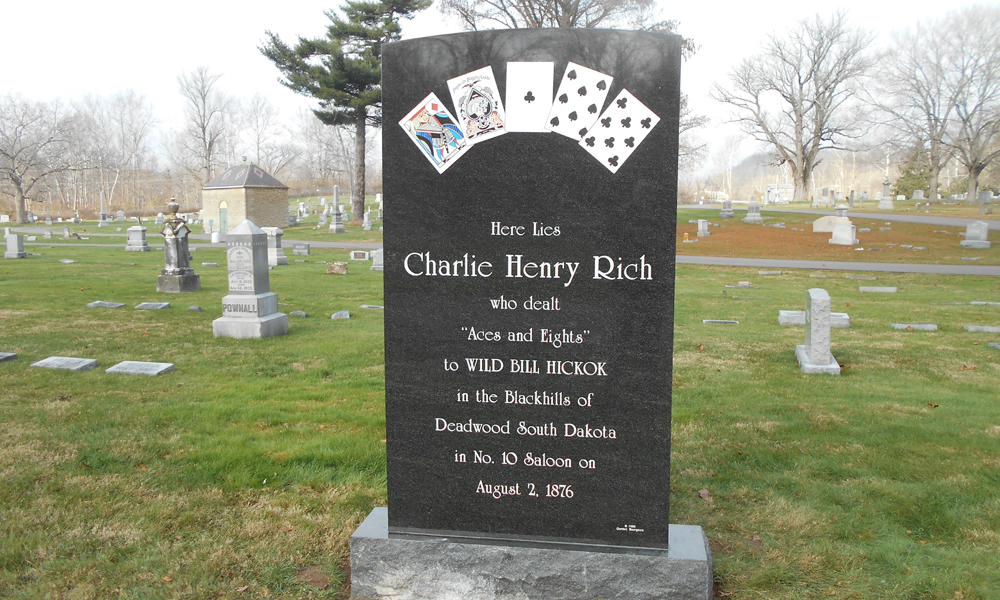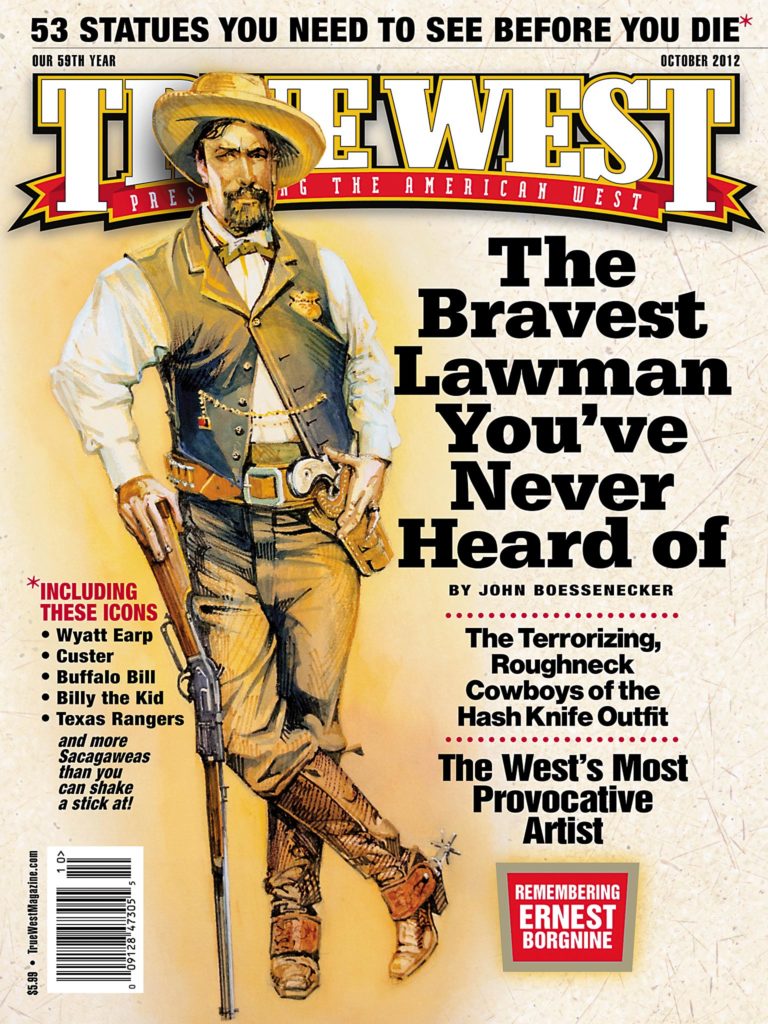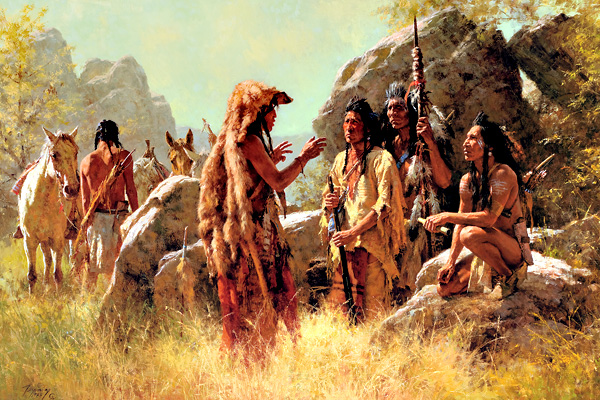 At this year’s Coeur d’Alene Art Auction, held in Reno, Nevada, on July 21, collectors found a grand offering of masters and contemporary artists who excel in pictorial storytelling that compels viewers to stop and take notice.
At this year’s Coeur d’Alene Art Auction, held in Reno, Nevada, on July 21, collectors found a grand offering of masters and contemporary artists who excel in pictorial storytelling that compels viewers to stop and take notice.
Thanks to the artists who recreated the frontier they saw with their own eyes, and to the pioneers and Indians who recorded their stories as they lived them, history is not trapped in an inaccessible past. Where Western American art excels is when the artist has richly narrated a world teeming with people and incident.
“At its worst, western history painting devolves into saccharin nostalgia. At its best, it uses all of the techniques of the illustrator’s and historian’s trades to transport its audience into another place and time, leading them through the eye into a contemplation of the vanished frontier,” wrote William H. and William N. Goetzmann in The West of the Imagination. They add that, for artists of the historical American West, “the West was a panorama that the artist witnesses as it unfolds, the immense saga of many people and many places and many events, great and small, that have shaped, and will continue to shape, the dreams of a great many Americans.”
From the “wolves” leading a Plains Indian reconnaissance to hardy cowpunchers roping a bear, Old West narratives spoke true and touchingly at this year’s auction, which closed at more than $17 million
CAPTIONS
Notable Western American Art Lots Included (All images courtesy Coeur d’Alene Art Auction)
Howard Terpning topped the auction with Scout’s Report, his pictorial narrative of Plains Indian scouts planning reconnaissance ahead of the war party; they wear wolf hides because these “wolves” believed the great hunting ability of the wolf was imparted to them; $850,000.
Frank Tenney Johnson’s action-packed Cowboy Roping the Bear hammered in at $800,000. As the second-highest painting sold at auction, it outpaced the Chief Joseph war shirt (which sold for $750,000) that we first reported on in the August 2012 issue.
Inspired by Maynard Dixon’s 1917 tour of the Blackfeet agency in Browning, Montana, his Lone Bull oil on canvas captures a relaxed, young Blackfeet man keeping a close watch over the camp’s horse herd; $375,000.
Alfred Jacob Miller was one of the first artists to document the American West, whose frontiers he first saw during an 1837 expedition that included a rendezvous with trappers and Indians at Wyoming’s Wind River Mountains. He very much admired the Indian horseback riders, writing of their “great precision and dexterity” in flinging ropes like the plaited bull hide rope shown in his Lassoing Horses; $325,000.
In his 1907 oil Pickets, Charles Schreyvogel masterfully evokes the chaotic life of frontier troopers, with one trooper firing in the middle ground, another about to fire to the side, one riding in with his pistol in the air and more troopers off in the distance; $250,000.
The self-taught artist Charles M. Russell gave up the cowboy life in 1893, around the time he created this watercolor, The Hunting Party, which sold for $175,000. This is typical of his Indian scenes, in which he sympathetically tells the story of a native people attempting to sustain their lives by pursuing game that was tragically dying off.


